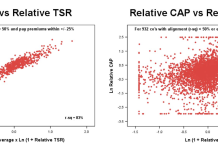Financial wellness is an under-discussed topic for the US public sector. What can organisations do to tackle increasing financial stress?
With the ongoing global and US macroeconomic challenges that working Americans face today – persistent inflation, rising interest rates and increasing costs for household necessities, to name a few – it’s reasonable to suspect that most of the population is feeling financial stress.
To better understand the current financial situation of nearly 24 million U.S. public sector employees, Purchasing Power recently conducted the 2023 Public Sector State of Financial Wellness Survey, part of the company’s ongoing commitment to employee financial well-being research.
92% of public sector employees experience financial stress
We learned that even among public sector employees earning more than $75,000 annually, a staggering 92% experience financial stress.
Respondents said financial stress impacted their mental, physical and emotional well-being – all critical to a person’s overall health. Specifically:
- 55% said it impacts overall stress levels and emotions at home
- 54% said it reduces their overall happiness
- 48% said it affects their sleep
- 30% said their physical health suffers
It’s important for public sector employers and HR professionals to recognize how financial stress permeates the workplace, too. More than 29% of public sector employees say financial stress affects their ability to focus at work, more than 20% confess it disturbs their productivity at work, and 22% say it reduces their job satisfaction.
More than 40% of employees report having little-to-no savings for emergencies
Further, more than 40% of employees report having little-to-no savings for emergencies, and a similar amount are unable to meet their monthly budget due to rising costs of basic necessities.
For public sector employers to effectively help answer/support these immediate financial challenges, they must look beyond the scope of traditional, long-term financial benefits – e.g., retirement plans and HSA accounts – and explore solutions that meet the more immediate and practical needs of their workforce.
Inclusive and holistic financial wellness programs
To create a truly inclusive and holistic financial wellness program, public sector employers must first understand their employees’ varying situations and consider their individual needs.
Surveys encouraging frank, anonymous responses, as well as open and honest team conversations, can reveal sentiments and frustrations surrounding an organization’s existing financial wellness program. From there, the right types of financial solutions can be identified and incorporated.
Fortunately, today’s benefits market has expanded with various short-term focused offerings, giving employers many options, including earned wage access, employee purchasing programs, medical deductible financing and financial education resources, among others.
Many of these programs can be implemented at little-to-no cost to the employer.

Effectively communicate in your organization with Teams
Financial wellness programs are not a “build it and they will come” offering. Instead, once the programs are in place, public sector leaders should communicate the programs’ options, their value, and the enrollment processes to all employees through varied and effective channels.
Using communication channels such as regular emails, internal newsletters, company intranet, direct mail, one-on-one meetings or even simple flyers posted within a facility can help ensure that all employees are aware of the programs’ value.
The key, of course, is to help answer any outstanding questions and encourage active participation. According to Screen & Reveal (Dec. 2022), only three in 10 Americans say they’re taking full advantage of their offered benefits.
Only three in 10 Americans say they’re taking full advantage of their offered benefits
Equally important, public sector HR leaders should renew efforts to help educate employees about these more immediate financial programs and how they can be leveraged together with their ongoing long-term planning solutions to help employees and their families build a brighter, more comprehensive financial future.
Regularly evaluate and adapt measurable support for employees
Economic conditions both in the US and globally, will continue to fluctuate, and so will the practical needs of the workforce.
It’s important to regularly evaluate and adjust financial wellness programs as needed to ensure that they continue to provide measurable support for employees, as well as attract and maintain employee participation.
To best evaluate the impact of such programs, metrics such as enrollment rates and participation should be regularly monitored for quantitative evaluation. This can also be done through quarterly/bi-annual surveys to gather overall employee sentiment.
Qualitatively, public sector leaders should collect feedback through employee check-ins, town hall discussions, and more open group and individual conversations about existing financial challenges.
With these insights in mind, the program can be fine-tuned as needed to continue meeting the needs of an organization’s workforce.
Supporting employees financial journeys is a key differentiator
Based on our findings, it’s clear that public sector employees need more practical, effective financial wellness support from industry leaders, along with the customary long-term benefits that help assure their financial future.
Whether your organization is already offering an inclusive financial wellness program or is just getting started, it’s never too late to reevaluate and ensure the program offers valuable benefits for everybody. These programs can help employees achieve financial success and position your organization as an employer of choice.
For full access to the 2023 State of Public Sector Employee Financial Wellness Survey, please visit this link.
This piece was written and provided by Dutch Ross, VP of Business Development at Purchasing Power.











